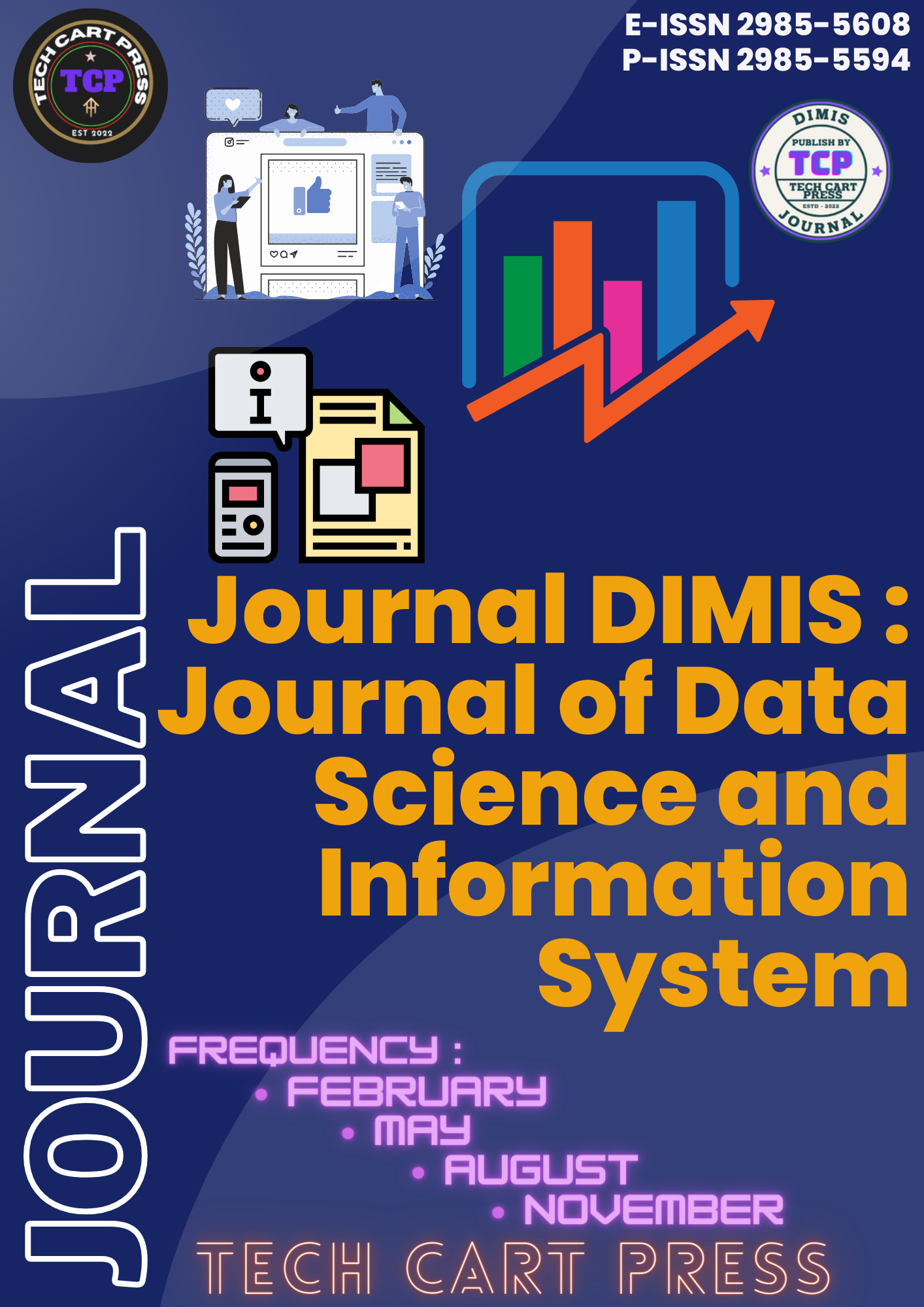Permodelan E-Posyandu Untuk Perkembangan Balita Menggunakan Extreme Programming
Abstract
The goal is to produce an E-posyandu system application that can provide convenience in recording posyandu data and ease for the public to access information related to growth and development data for toddlers and babies. Problems in the process carried out at posyandu such as the process of processing and recording using written media have an impact on the recap process repeatedly, writing errors and presentation of reports that seem slow. The problem with the services provided in the form of toddler growth and development information is not yet fully available that can be seen by members or the public starting from target level information, Cards Towards Health, Weighed and Climbed still using the blackboard, thus impacting the limited scope of information. System development is carried out with an extreme programming method with an object-oriented system built using a Mysql database and has a back end display using a website and a toddler parent section using a mobile application as the front end. With this system, the public can see detailed information and information graphs of toddler growth and development data and can see nutritional information and specialist doctors. Based on the results of functional suitability testing, 96.92% of the results were obtained so that it can be concluded that respondents assessed that the system built has been successful and based on usability testing obtained by 82.33% it can be concluded according to respondents, namely Strongly Agree that the development is appropriate.
References
S. Ahdan and S. Setiawansyah, “Pengembangan Sistem Informasi Geografis Untuk Pendonor Darah Tetap di Bandar Lampung dengan Algoritma Dijkstra berbasis Android,” J. Sains dan Inform. Res. Sci. Inform., vol. 6, no. 2, pp. 67–77, 2020.
D. Darwis, A. Ferico Octaviansyah, H. Sulistiani, and R. Putra, “Aplikasi Sistem Informasi Geografis Pencarian Puskesmas Di Kabupaten Lampung Timur,” J. Komput. dan Inform., vol. 15, no. 1, pp. 159–170, 2020.
A. Surahman, A. D. Wahyudi, and S. Sintaro, “Implementasi Teknologi Visual 3D Objek Sebagai Media Peningkatan Promosi Produk E-Marketplace,” 2020.
S. Setiawansyah, P. Parjito, D. A. Megawaty, N. Nuralia, and Y. Rahmanto, “Implementation of The Framework for The Application of System Thinking for School Financial Information Systems,” Tech-E, vol. 5, no. 1, pp. 1–10, 2021.
I. Yasin and F. Hamidy, “Implementasi Sistem Informasi Data Kas Kecil Menggunakan Metode Web Engineering,” Chain J. Comput. Technol. Comput. Eng. Informatics, vol. 1, no. 1 SE-Articles, pp. 7–13, Jan. 2023, doi: 10.58602/chain.v1i1.3.
J. S. Putri, A. T. Priandika, and Y. Rahmanto, “Sistem Informasi Administrasi Surat Menyurat Pada Kantor Balai Desa Jatimulyo,” Chain J. Comput. Technol. Comput. Eng. Informatics, vol. 1, no. 1 SE-Articles, pp. 1–6, Jan. 2023, doi: 10.58602/chain.v1i1.1.
Perpres, “Rencana Pembangunan Jangka Menengah Nasional (RPJMN) 2015-2019,” Peratur. Pres. Republik Indones., vol. 114, no. 1, pp. 2015–2019, 2019, doi: 10.1088/1757-899X/114/1/012081.
Kemenkes, “Kemenkes RI. Profil Kesehatan Indonesia 2017.,” J. Ilmu Kesehat., 2018.
R. Tulloh, D. N. Ramadan, and D. Gusnadi, “Aplikasi e-KMS untuk Pendataan dan Rekapitulasi Tumbuh Kembang Balita di Posyandu Mekar Arum 18 E-KMS Application for Data Collection and Recapitulation of Toddler Growth in Posyandu Mekar Arum 18,” J. Panrita Abdi, vol. 4, no. 2, pp. 216–224, 2020.
M. Damayanti and R. Jannah, “PEMANFAATAN APLIKASI ePoK (e-Posyandu Kesehatan) DALAM MEMANTAU PERTUMBUHAN DAN PERKEMBANGAN BALITA,” J. Pengabdi. Mandiri, vol. 1, no. 9, pp. 1755–1760, 2022.
M. Muhasshanah, A. Ghofur, and F. Fatimatuzzahra, “Perancangan dan implementasi e-posyandu untuk peningkatan pelayanan kader di posyandu delima berbasis web,” INFOTECH J. Inform. Teknol., vol. 3, no. 2, pp. 116–124, 2022.
I. Verawati and R. T. Kuncoro, “Analisis dan Perancangan Sistem Informasi E-Posyandu Pada Posyandu Watukarung Berbasis Mobile Application,” INTECHNO Journal-Information Technol. J., vol. 1, no. 4, pp. 41–46, 2019.
APJII, “Penetrasi & profil perilaku pengguna internet indonesia tahun 2018,” 2018.
H. Sulistiani, A. Yuliani, and F. Hamidy, “Perancangan Sistem Informasi Akuntansi Upah Lembur Karyawan Menggunakan Extreme Programming,” Technomedia J., vol. 6, no. 01 Agustus, 2021.
R. Indra, A. Thyo, and A. Rahman, “Implementasi Metode Pengembangan Sistem Extreme Programming ( XP ) pada Aplikasi Investasi Peternakan Implementation of Extreme Programming ( XP ) System Development Method in Livestock Investment Aplication,” vol. 8, no. 3, pp. 272–277, 2020, doi: 10.26418/justin.v8i3.40273.
B. S. Gandhi, D. A. Megawaty, and D. Alita, “Aplikasi Monitoring Dan Penentuan Peringkat Kelas Menggunakan Naïve Bayes Classifier,” J. Inform. dan Rekayasa Perangkat Lunak, vol. 2, no. 1, pp. 54–63, 2021.
F. Y. Al Irsyadi, D. Puspitassari, and Y. I. Kurniawan, “ABAS (Ayo Belajar Sholat) : Game Edukasi Pembelajaran Sholat Untuk Anak Tuna Rungu Wicara,” J. Manaj. Inform., vol. 9, no. 1, pp. 17–28, 2019, doi: 10.34010/jamika.v9i1.1537.
S. Rizal and B. Walidain, “Pembuatan Media Pembelajaran E-Learning Berbasis Moodle Pada Matakuliah Pengantar Aplikasi Komputer Universitas Serambi Mekkah,” J. Chem. Inf. Model., vol. 19, no. 2, pp. 178–192, 2019, doi: 10.1017/CBO9781107415324.004.
Sugiyono, “Metode Penelitian Kuantitatif,Kualitatif dan R&D,” in ke-26, 2018, p. 334.
Copyright (c) 2023 Donaya Pasha, Ajeng Savitri Puspaningrum, Delicia Izazi Eka Eritiana

This work is licensed under a Creative Commons Attribution-ShareAlike 4.0 International License.





